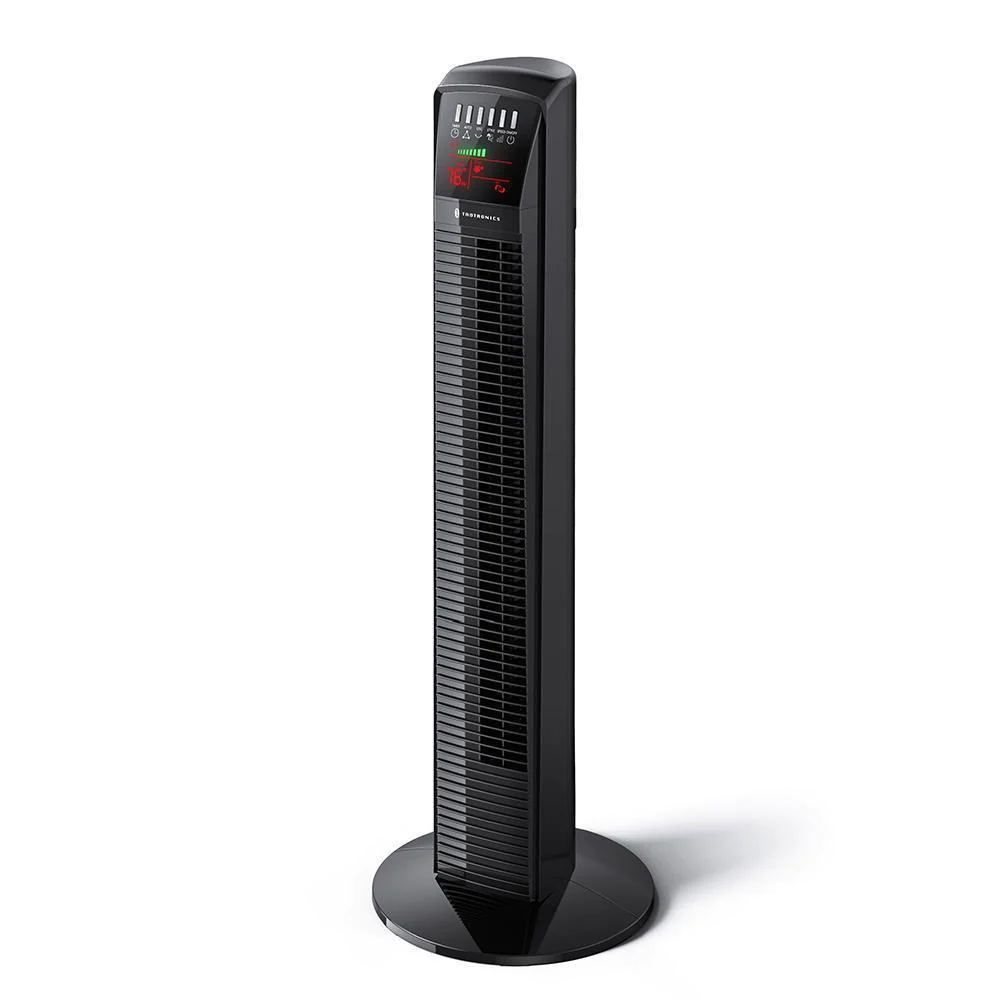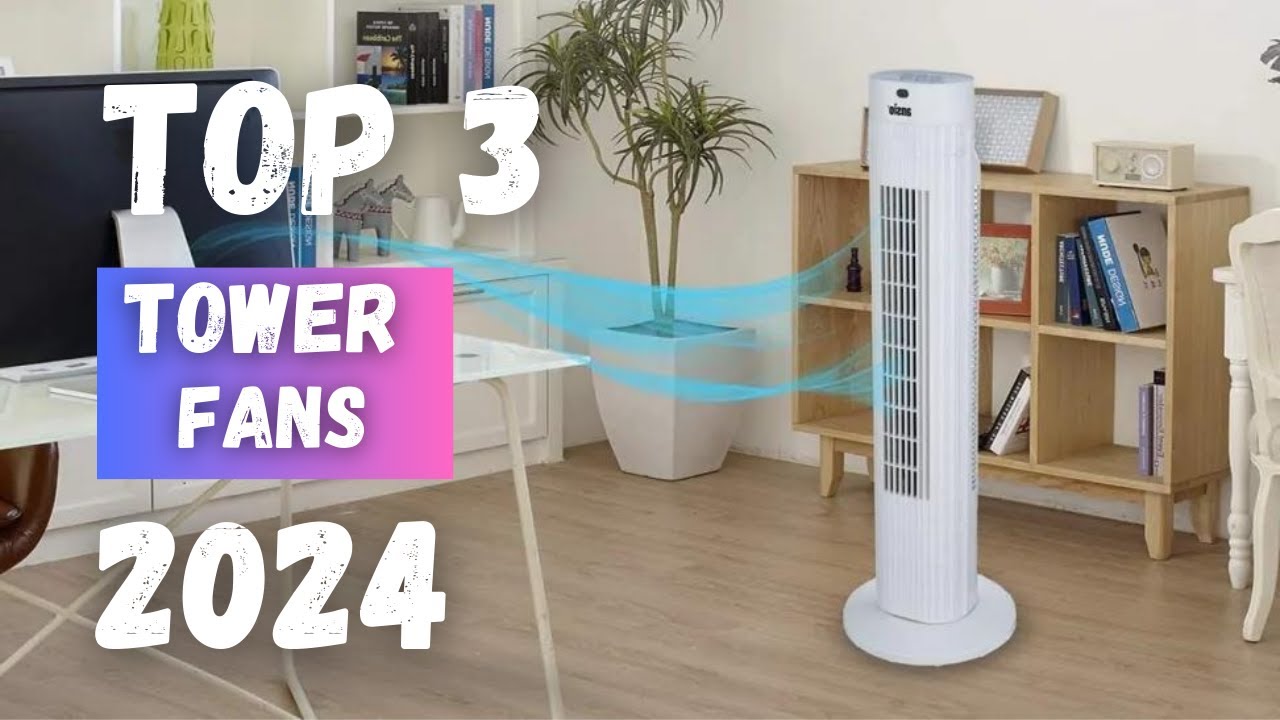If you’re seeking relief from a hot and stuffy home, consider a tower fan as an easy solution. Tower fans offer convenience and energy efficiency, serving as a more affordable alternative to air conditioning units, especially in settings like apartment buildings. Unlike box fans, tower fans boast a smaller footprint, making them suitable for placement in corners or other out-of-the-way spots. They excel at cooling various rooms throughout your home, including the family room, dining area, bedroom, or office.
Tower fans are designed to stand upright and oscillate from side to side, efficiently distributing cool air across the room. The best models feature a range of designs and functionalities, such as programmable timers, quiet operation, oscillation, and even air purification.
After extensive testing in my own home in Louisville, Kentucky, where temperatures often soar, I’ve identified several top tower fans for warm and sunny days. Here are my recommendations based on airflow management and performance.
QUICK LIST
Last update on 2024-02-26 / Affiliate links / Images from Amazon.
Top 3 Tower Fans 2024
1.Honeywell Quietest HYF 290B
- Perfect for cooling a medium to large size room without taking up much space
- Remote Control, nests in back of fan housing for easy storage
- Honeywell quality: Help improve air circulation & energy savings in your home, bedroom or office with Honeywell fans;Fused safety plug
Last update on 2024-02-26 / Affiliate links / Images from Amazon.
Tower fans can sometimes produce noise, which might be bothersome if you plan to use one while sleeping or watching TV. However, the Honeywell QuietSet, the quietest fan I tested, offers a solution to this issue. Not only does it operate at a low noise level, measuring just 41 decibels on its highest speed setting at a distance of 30 inches, but it also excels in energy efficiency, consuming only 36 watts at maximum power.
The QuietSet provides a range of settings to suit various preferences, including a near-silent Sleep mode at 26 decibels and a comfortably quiet White Noise setting at 28 decibels. Additionally, it offers Relax, Refresh, Cool, and Power Cool settings, which effectively move air while minimizing noise. Its slim, rocket-shaped design is sturdy and compact, with convenient features like a remote control (batteries included) that can be neatly docked in the back when not in use, and easy-to-use upward-angled controls on top. Furthermore, you can customize the brightness of the LED lights on the control panel.
While the warranty period is only one year, the Honeywell QuietSet remains an impressive and affordable tower fan option, priced at $70 with a current half-off offer available at Target.
TaoTronics TT-F001 oscillating

Priced at just under $70, the TaoTronics TT-F001 may not be the most budget-friendly tower fan option, but it certainly delivers value with its impressive array of features and efficient cooling performance packed into a compact 35-inch build. While its power draw of 60 watts falls second only to the Dyson among the fans tested, and its highest-speed setting registers as the second noisiest at 48 decibels, these factors aren’t necessarily deal-breakers, especially for those prioritizing cooling power in a smaller tower fan.
In terms of features, the TT-F001 boasts an ambient temperature display, albeit with a somewhat dated appearance. However, during testing, I found these temperature readings to be highly accurate, confirmed by cross-referencing with thermocouples. A standout feature is its autopilot mode, where the fan automatically activates once the temperature exceeds 79 degrees Fahrenheit—an option not offered by most other fans tested, except for the Dyson. Additionally, the TT-F001 offers artificial breeze modes and a removable back cover, simplifying the cleaning process—a feature appreciated by many users.
3.Dyson Pure Cool TP04 AirPurifying
No products found.
Last update on 2024-02-26 / Affiliate links / Images from Amazon.
When it comes to top-tier tower fans, Dyson’s offerings are hard to surpass. The Dyson TP04, their latest model, is a substantial unit equipped with large activated carbon and glass HEPA filters positioned at the base intake. This unique feature enables the TP04 to not only cool but also purify the air it circulates, effectively removing dust and allergens, with Dyson claiming filtration of particles as small as 0.3 microns. However, if air purification is your primary goal, there are alternative options available at lower price points, as noted by my colleague David Priest.
Apart from air filtration, the Dyson TP04 offers 10 speed settings ranging from an ultra-quiet 28 decibels to a more powerful 48-decibel blast of concentrated air. It provides a comfortable airflow reminiscent of Dyson’s signature bathroom hand dryers but in a gentler form. The device features an LCD screen that displays real-time air quality information, along with options to view ambient room temperature or relative humidity. Additionally, users can customize the oscillation angle, choosing from 45-, 90-, 180-, and 350-degree settings, a unique and convenient feature. The sleek remote control magnetically docks on top of the fan when not in use.
Furthermore, the TP04 is equipped with app-enabled capabilities, allowing users to monitor air quality and create custom cooling schedules via the Dyson Link app. The app also facilitates customization of the fan’s autopilot mode. Additionally, the TP04 supports voice control through Alexa or Siri.
Overall, the Dyson TP04 stands out as one of the most luxurious and feature-rich tower fans on the market. Whether its premium price tag is justified depends on individual preferences. However, it’s worth noting that it falls within a similar price range as high-end air purifiers from brands like Coway and Levoit, despite offering additional functionalities. Additionally, the original Dyson TP01, offering similar design and features, remains available at a slightly lower price point, making it a viable alternative for budget-conscious buyers.
conclusion
Testing tower fans can be challenging, particularly when working from home without access to a controlled laboratory environment. Unlike air conditioners that produce cold air, tower fans operate by recirculating air present in the room. While this creates a refreshing breeze-like effect, it’s not as straightforward to measure using temperature probes.
The effectiveness of a tower fan is primarily evaluated based on its airflow distribution, noise levels, energy efficiency, and additional features such as oscillation and speed settings. Assessing these factors typically involves subjective observations, such as how effectively the fan cools down the room, how quietly it operates, and its overall performance compared to other models.
Despite the lack of precise laboratory conditions, thorough testing can still be conducted by simulating real-world scenarios and evaluating the fan’s performance under various conditions. This might involve testing in different room sizes, airflow patterns, and environmental conditions to assess how well the fan performs in practical settings.
Ultimately, while testing tower fans may not be as straightforward as testing air conditioners, with careful consideration and evaluation of key factors, meaningful insights can still be gathered to help consumers make informed purchasing decisions.






